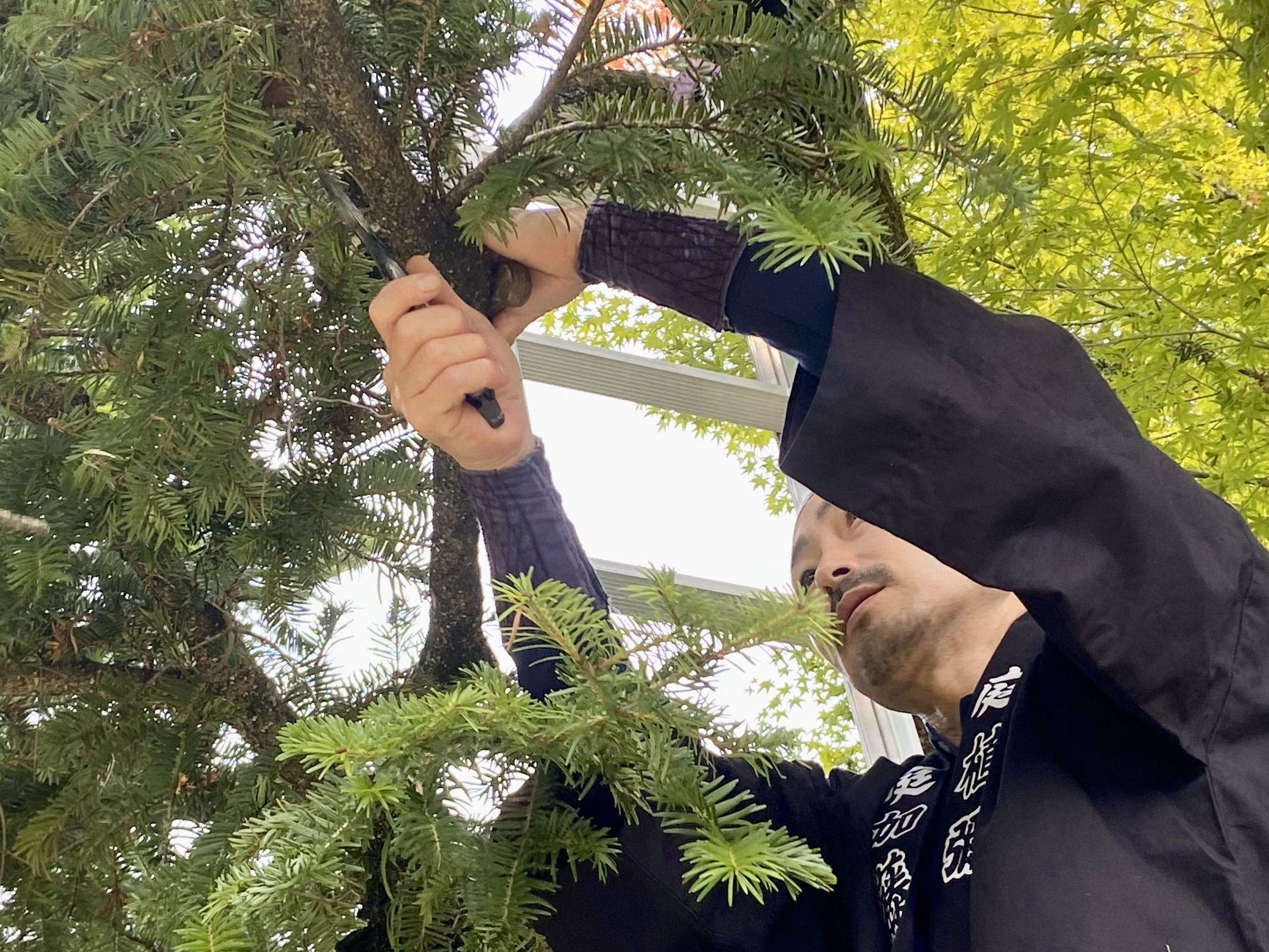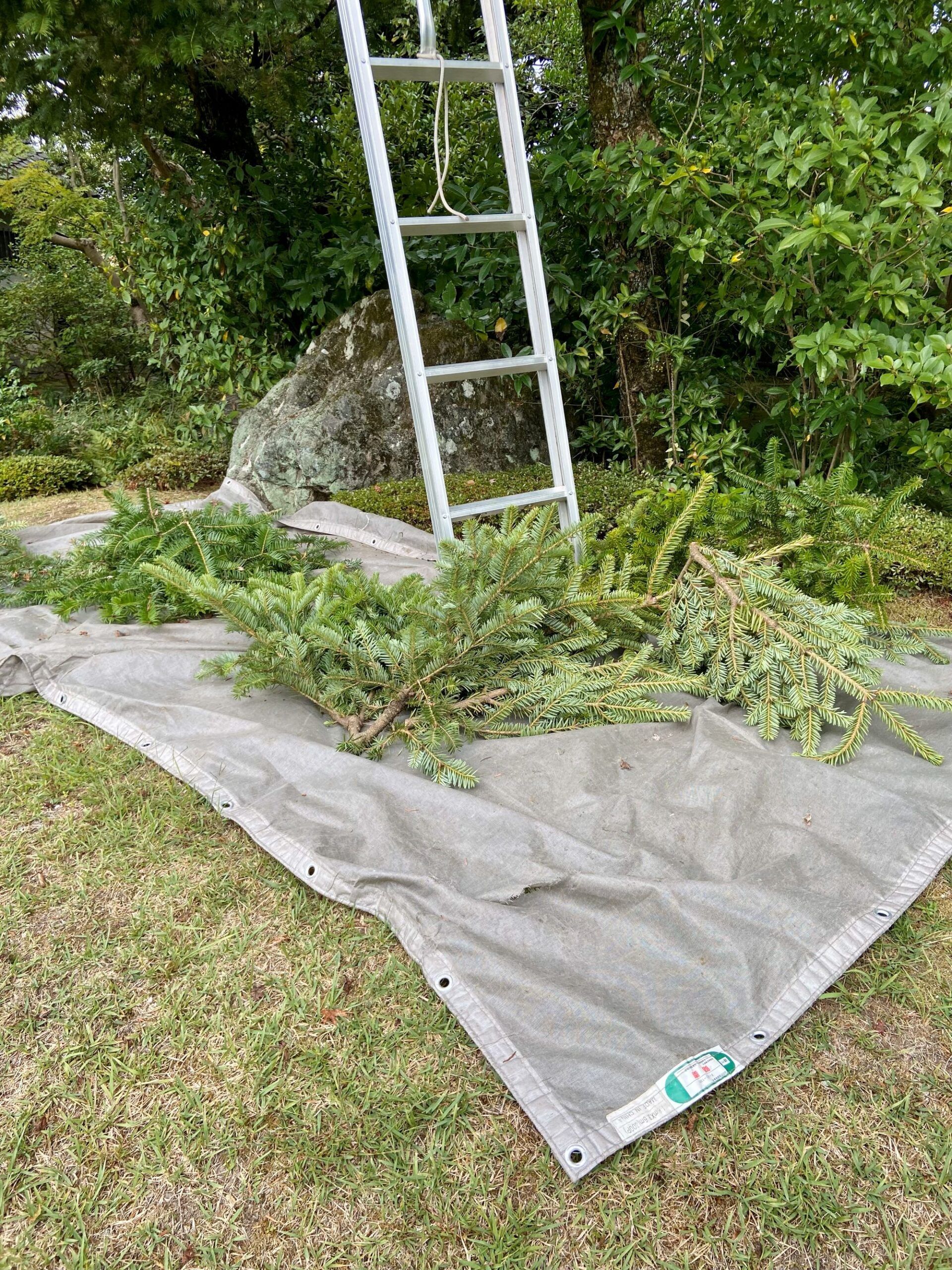Pruning a Fir Tree

When people think of Japanese garden care, what’s the first thing that comes to mind? Probably tree pruning, right? Most people think of pruning as the task of cutting long branches and ordering the tree’s look, kind of like giving the tree a haircut. But there is an important reason for pruning that goes well beyond reordering the tree.
On this day, Murin-an’s head garden Kenta Deguchi pruned a fir tree growing on the northeast side of the garden lawn.
“When I looked at the tree from in front of the main house, it felt heavy” Deguchi-san says, explaining why he decided to thin it. Thinning the fir tree near the main house has the effect of blending it into the surrounding scenery, giving the garden a greater feeling of breadth. Even as Deguchi-san explains this, there are branches being thinned by another gardener that fell down from the top of the tree.

Pruning work places a heavy burden on a tree. For a human being, it’s like the equivalent of surgery. Getting the timing or the degree of pruning wrong could even kill the tree. That is why gardeners pay close attention to a wide range of factors about when and how to prune trees.
Fir pruning is always done between autumn and winter. That’s because firs come from cool climates, which means they find summer pruning very stressful. Given the growth rate of Murin-an’s firs, Deguchi-san says they should be pruned once every 2-3 years.
When actually pruning a tree, the important thing is to cut it in the right place. Cutting too close to the branch’s base is too long a cut. The point of pruning is to give the trees the right natural look, but also draw out their ability to heal themselves naturally. Branch bases are defensive layers that are called “protection zones” in Japanese. Invading them, or leaving too much of the branch, keeps the cut wound from being healed and lets in outside germs that rot the trunk. This work isn’t about cutting away as much as you can.
The tools used to prune branches are also important. Smoothly cut surfaces heal quickly and cleanly. Using the right pruning tool is essential to making a clean cut.
Under these careful considerations for the tree, branches are cut away one after another, but such considerations are only the foundation of pruning. When asked what the most important thing about pruning is, Deguchi-san answered as follows.
“A garden is a collective body of individual personalities. What’s important is how beautiful you can make the whole by bringing out each one of those personalities. So the most important thing in pruning is how to draw out each tree’s unique value.
When I was younger, my supervisor would tell me to “approach garden plants with love,” but back then I didn’t understand what that meant. I do now have something that you could call love, a genuine feeling that if you approach a plant with sincerity as you read its condition, it is sure to respond to you.”
This is more than just cutting overgrown branches. It is even more than ordering the tree’s shape. Pruning is about preserving the whole garden’s beauty by communicating with its plants and drawing out their personalities.
After being pruned, the fir tree looks much refreshed and blends into the garden’s landscape. Yet its presence in the garden feels stronger than ever. Murin-an’s relaxed natural beauty is created by the trust that exists between its gardener and its plants.